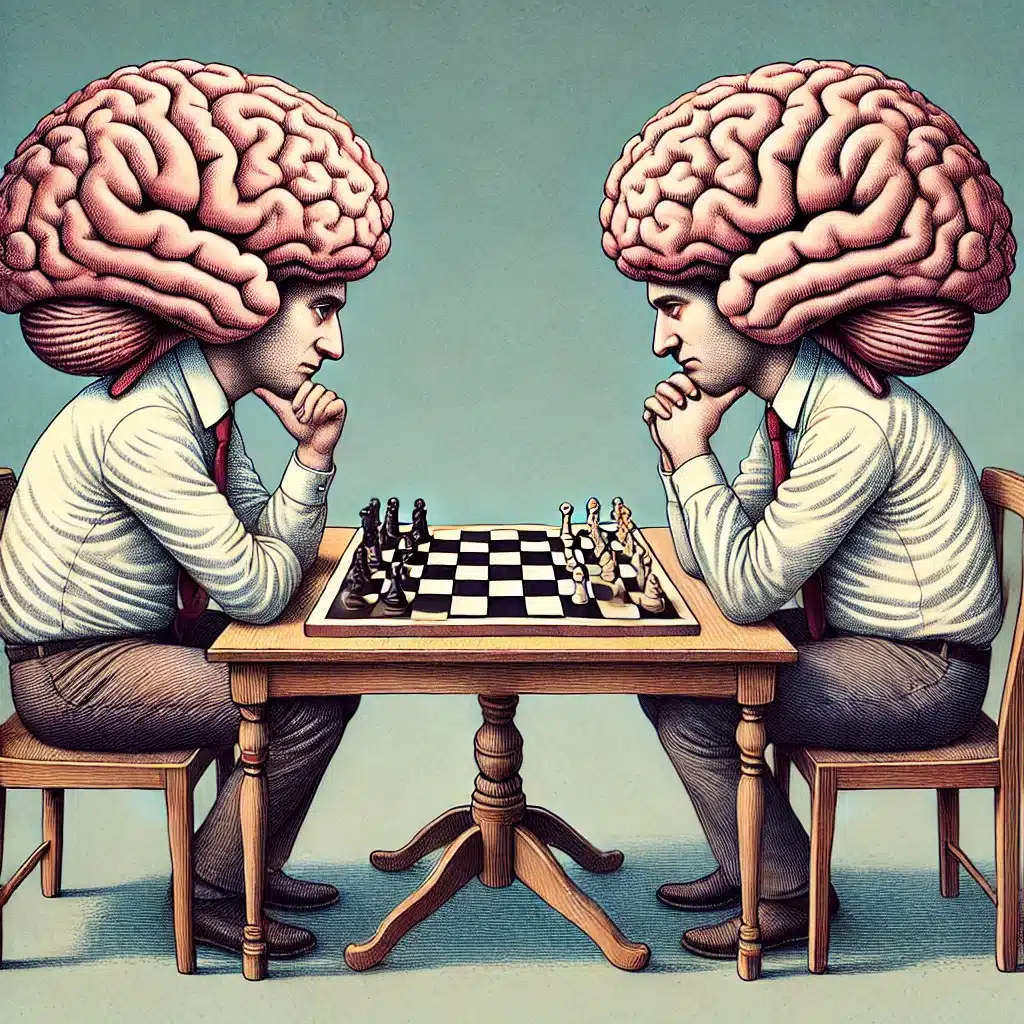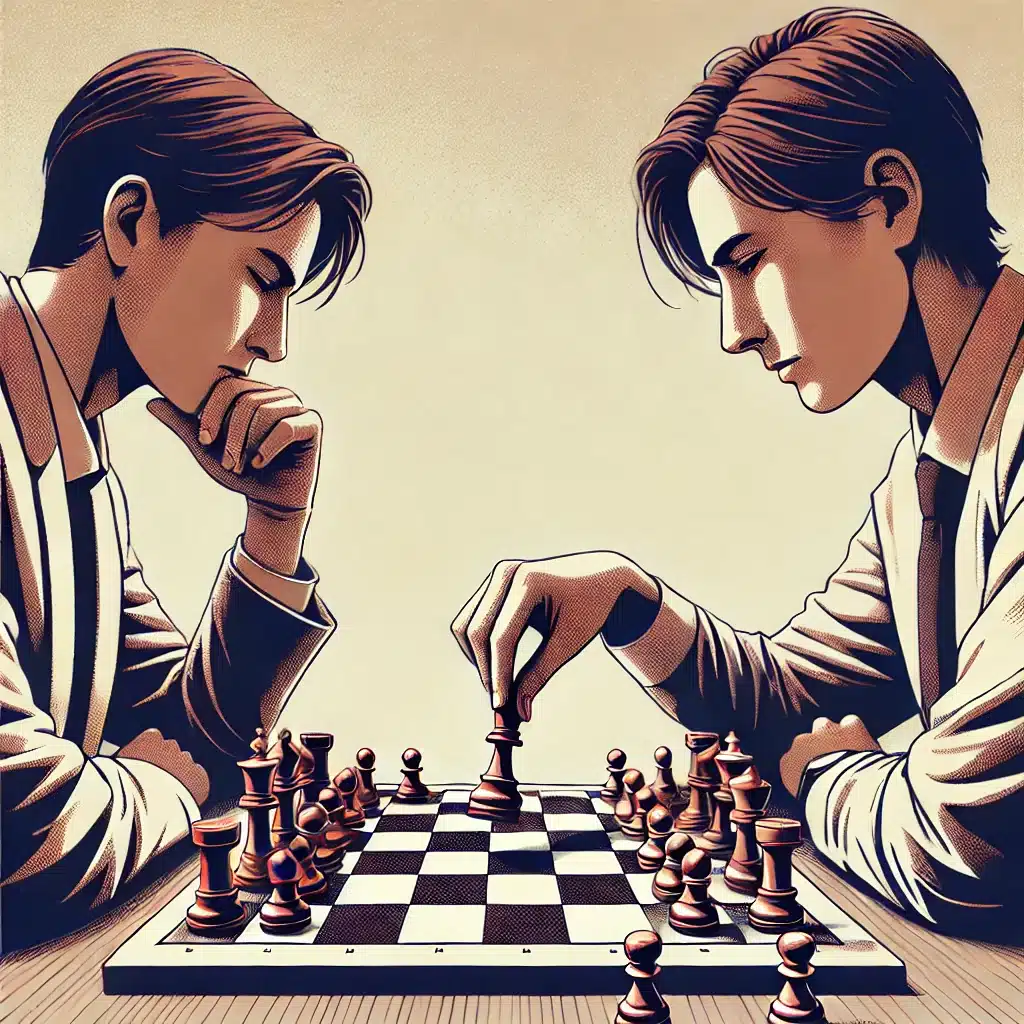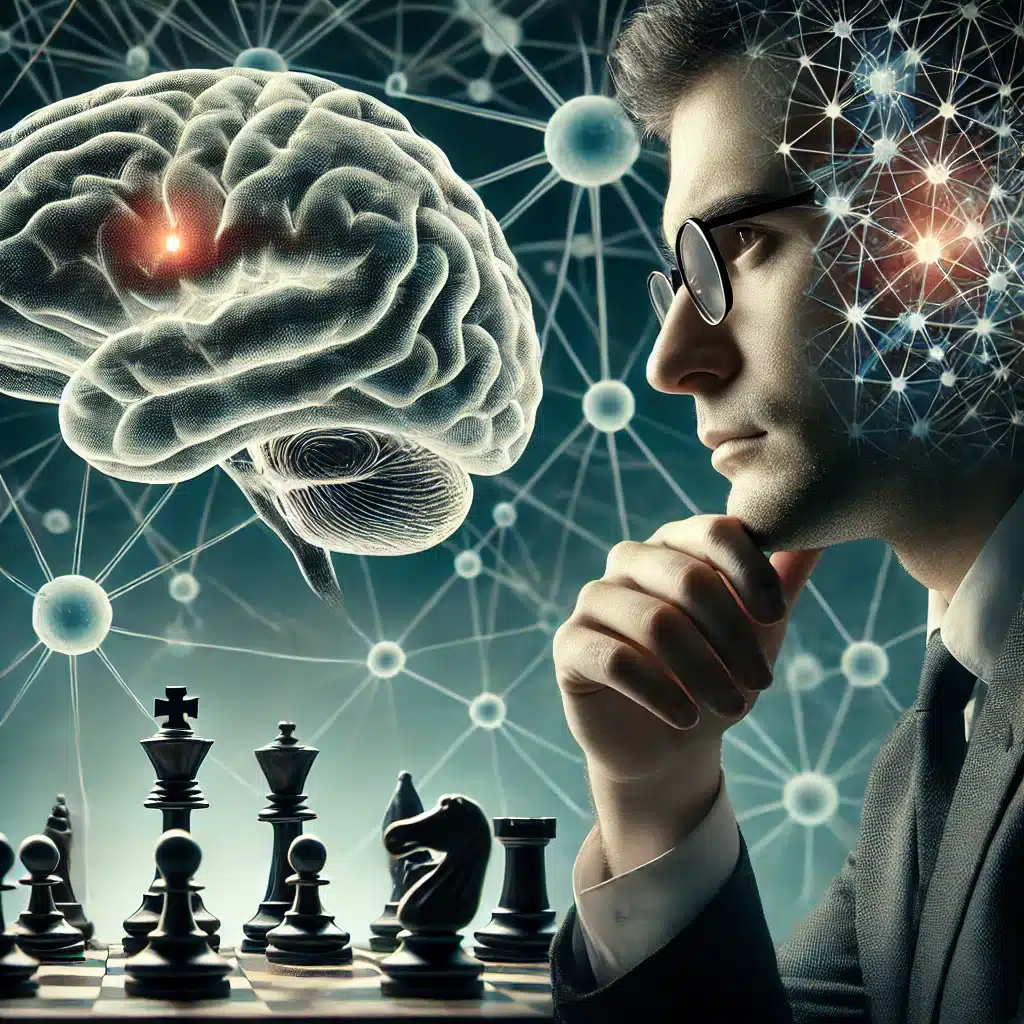Expert chess players use chunk memory to make better decisions, showing unique brain connectivity that helps them perform well even against tougher opponents.
Highlights:
- Consistent Performance: Expert chess players perform equally well regardless of the difficulty level, unlike beginners whose performance drops with increased difficulty.
- Stronger Brain Connections: Experts show stronger connections in specific brain areas like the prefrontal cortex and the gyrus regions, which help them process and remember complex patterns better.
- Efficient Brain Network: Experts have more efficient brain networks, with higher clustering and shorter paths, allowing faster and more effective information processing during difficult tasks.
- Better Chunking: Experts excel in breaking down and grouping information (chunking), which helps them make quicker and more accurate decisions during games.
Source: Brain & Behavior (2024)
Defining “Expert” in the Chess Study
In this study, “experts” were defined as chess players classified as club players.
These individuals had an average Elo rating of 1501.85 ± 77.37 and at least two years of chess-playing experience.
The Elo rating system, developed by Arpad Elo and applied by the Federation Internationale des Echecs (FIDE), is a widely recognized method for ranking chess players based on their performance in games.
Expertise Level
Club Players: The study participants classified as experts were club players with moderate to high Elo ratings, indicating a higher skill level than novices but not necessarily at the level of elite or grandmaster players.
Novice Players: The novices had minimal chess experience (up to three months) and significantly lower Elo ratings (average 1092.85 ± 105.85), indicating a beginner level of skill.
Expertise Classification
Skill & Ratings: While the study’s club players are experienced and have higher ratings compared to novices, they may not be considered “elite” or “grandmaster” level experts. The classification reflects a significant level of skill and experience but does not necessarily represent the highest tiers of chess expertise.
Veterans vs. Experts: The term “expert” in this study refers to players with substantial experience and higher-than-average ratings, positioning them as skilled veterans rather than top-tier grandmasters.
Main Findings: Differences in Brain Connectivity & Function in Chess Players (2024)

The study highlights that the cognitive processes and brain functions of expert chess players are highly specialized, enabling them to perform at a consistently high level even in challenging conditions.
1. Consistent Performance Across Difficulty Levels
Expert chess players, referred to as “club players,” maintained their performance regardless of the difficulty level of the tasks.
Unlike novices, who made more mistakes as the tasks became harder, the experts’ accuracy and decision-making remained steady.
2. Stronger Functional Brain Connectivity
The study revealed that expert players had stronger connections in specific brain regions such as the dorsolateral prefrontal cortex, frontopolar cortex, supramarginal gyrus, and subcentral gyrus.
These areas are crucial for processing complex information and making decisions.
In high-difficulty tasks, experts showed significant connections in areas that help in recognizing patterns and retrieving memories, which are vital for making strategic moves in chess.
3. Efficient Brain Network Topology
Experts displayed more efficient brain networks characterized by higher clustering coefficients and shorter path lengths.
This means their brains are better at organizing and transmitting information quickly and effectively.
The efficient network structure helps experts process and react to complex chess positions more rapidly than novices.
4. Enhanced Chunking Processes
Chunking refers to breaking down complex information into smaller, manageable pieces.
Chess experts are significantly better at chunking, allowing them to remember and process large amounts of information swiftly.
This enhanced chunking ability is supported by their stronger brain connectivity, particularly in the frontal-parietal regions, which are associated with higher-order thinking and problem-solving.
5. Brain Imaging Insights
Using functional near-infrared spectroscopy, the study compared the brain activity of 20 expert chess players and 20 novices.
This technique helped map out the functional networks and topological features of their brains, providing detailed insights into how experts’ brains operate differently during chess tasks.
The imaging showed that the experts’ brains have distinct patterns of activation and connectivity that support their superior performance and decision-making abilities.
Study Details: Expert vs. Novice Chess Players in Different Difficulty Settings (2024)

Participants
Expert Group: 20 chess players, classified as club players with an average Elo rating of 1501.85 ± 77.37. These players had at least two years of chess-playing experience and an average age of 22.8 ± 2.53 years.
Novice Group: 20 participants with minimal chess experience (up to three months) and an average Elo rating of 1092.85 ± 105.85. The average age of this group was 21.75 ± 1.17 years.
Both groups were free from any physical or mental health issues and provided informed consent prior to participation.
Methods
1. Task Design
Participants played chess games against two computer opponents with different skill levels (Elo 1350 for low difficulty and Elo 1800 for high difficulty).
Each game lasted 3 minutes, with a requirement to make at least 15 moves within the time limit. Participants took 2-minute breaks between games.
2. Behavioral Analysis
The Stockfish chess engine analyzed the games to calculate inaccuracy rates, which represent mistakes made during the games.
Performance was compared using a two-way analysis of variance (ANOVA) to determine the impact of task difficulty and expertise level.
3. Brain Imaging
Functional near-infrared spectroscopy (fNIRS) was used to measure brain activity. This technique employed 16 light sources and 23 detectors to record brain signals, focusing on the frontal, motor, and parietal regions.
Data preprocessing included converting raw signals to optical density values, filtering for noise, and normalizing the signals for analysis.
4. Functional Connectivity & Graph Theory Analysis
The study constructed functional connectivity networks by analyzing the similarity of brain region activities and applied Pearson’s correlation to build a connectivity matrix.
Graph theory metrics such as clustering coefficient, path length, and small-world properties were calculated to assess the efficiency and organization of brain networks.
Statistical tests (ANOVA) were used to compare network properties across different conditions and expertise levels, with corrections for multiple comparisons to ensure accuracy.
Limitations
- Subjective Difficulty Perception: Individual perceptions of game difficulty could vary, which might influence performance outcomes. The study attempted to standardize difficulty levels but acknowledged inherent variability.
- Participant Expertise Range: The study included club-level players rather than elite grandmasters due to recruitment constraints. This choice still provided significant insights but might limit generalizability to top-tier chess experts.
- Technological Constraints: The study focused on the frontal-parietal regions using fNIRS, which has limitations in depth and spatial resolution compared to other imaging techniques like MRI. Future research could employ MRI to explore more detailed brain activity and connectivity patterns.
The findings of this study raise an interesting question: Are the observed differences in chunk memory and brain connectivity a result of inherent abilities that lead individuals to become expert chess players, or do these cognitive enhancements develop through extensive practice and experience in playing chess?
Inherent Abilities vs. Developed Skills
Natural Selection
It is possible that individuals who become expert chess players are naturally predisposed to have more efficient chunk memory processes and distinct brain connectivity patterns.
This inherent cognitive advantage might make them more likely to excel in chess, leading to a selection effect where only those with these natural abilities reach high levels of expertise.
Developed Skills
On the other hand, the cognitive enhancements observed in expert players could be primarily a result of extensive practice and training.
Repeatedly engaging in complex chess tasks might lead to the development of more efficient brain networks and chunking processes over time, suggesting that these skills can be cultivated rather than being solely innate.
Survivorship Bias
Survivorship Bias in Chess
Survivorship bias occurs when only the successful subjects are considered, potentially skewing the results.
In the context of chess, it might mean that only those who naturally possess or develop the necessary cognitive skills continue to play and excel, while those without these skills drop out early.
This could create the appearance that expert players are inherently different, when in fact it may be a combination of initial ability and perseverance.
Impact on Study Results
If survivorship bias is at play, the study’s results may predominantly reflect the characteristics of those who have successfully navigated the challenges of becoming expert players.
This bias could imply that while certain cognitive traits are beneficial for success in chess, they are not exclusive to expert players and might be present in novices who have not yet had the opportunity to fully develop them.
Potential Applications & Implications…
Cognitive Training Programs
Chess Training
The study’s findings on chunk memory and brain connectivity in expert chess players can be leveraged to develop targeted training programs.
By focusing on enhancing chunking processes and functional connectivity in the brain, chess trainers can help novices and intermediate players improve their skills more effectively.
Cognitive Skills Development
The principles of chunk memory and efficient brain networks observed in chess experts can be applied to other domains that require quick decision-making and pattern recognition, such as mathematics, programming, and strategic games like Go.
Educational Tools & Techniques
Educational Curricula
Integrating chess and similar strategic games into educational curricula can promote cognitive development in students.
The study highlights how engaging in complex tasks like chess can enhance brain function and cognitive abilities, suggesting that these activities can be valuable educational tools.
Personalized Learning
By understanding how expertise affects brain connectivity, educators can tailor learning experiences to individual students, helping them develop more effective study habits and cognitive strategies based on their unique strengths and weaknesses.
Conclusion: Chess Experts, Chunk Memory, Brain Connections
References
- Study: Distinct brain network organizations between club players and novices under different difficulty levels (2024)
- Authors: Chantat Leong et al.







